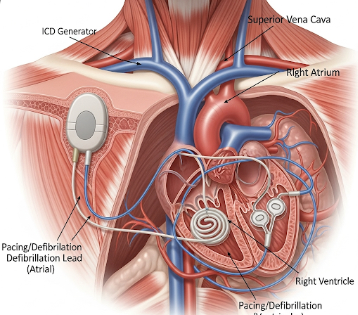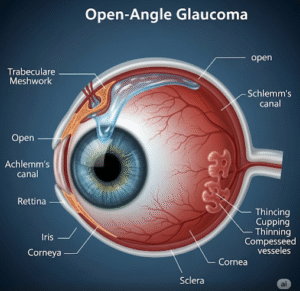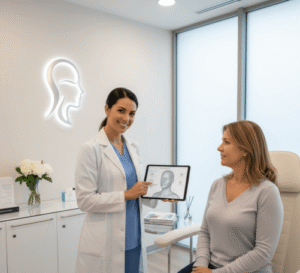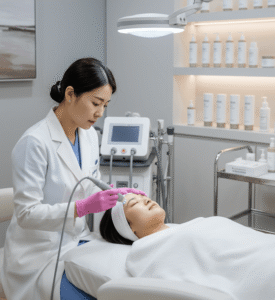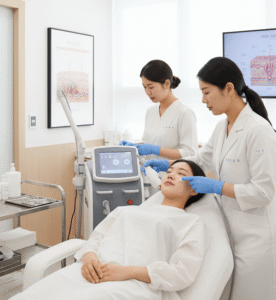Overview
An Implantable Cardioverter Defibrillator (ICD) is a small electronic device implanted in the chest to monitor and correct abnormal heart rhythms (arrhythmias). It can deliver electrical shocks or pacing to restore a normal heartbeat in patients at risk of sudden cardiac arrest.
South Korea is recognized for advanced cardiology, state-of-the-art electrophysiology labs, and expert cardiac surgeons, making it a preferred destination for patients seeking safe and effective ICD implantation.
What is an ICD?
An ICD is a medical device implanted under the skin with leads (wires) threaded into the heart chambers to:
- Continuously monitor heart rhythm
- Detect life-threatening arrhythmias like ventricular tachycardia or ventricular fibrillation
- Deliver electrical shocks or anti-tachycardia pacing to restore normal rhythm
- Provide long-term protection against sudden cardiac arrest
Indications include:
- Survivors of cardiac arrest due to ventricular arrhythmias
- Patients with severe cardiomyopathy or heart failure
- High-risk patients with congenital or genetic arrhythmia syndromes
- Patients with reduced ejection fraction (<35%) despite optimal medical therapy
What are the Benefits?
- Life-saving protection → Detects and corrects fatal arrhythmias instantly
- Continuous heart monitoring → Provides data for long-term cardiac management
- Reduces risk of sudden cardiac death in high-risk patients
- Minimally invasive implantation → Small incision, low surgical risk
- Improved quality of life → Peace of mind for patients and families
- Expert care in Korea → High success rates and modern device programming
Procedure Details
1) How should I prepare for ICD implantation?
- Preoperative evaluation → ECG, echocardiogram, blood tests, chest X-ray, and cardiac imaging
- Medication review → Blood thinners or heart medications may need adjustment
- Fasting → 6–8 hours before procedure
- Pre-procedure consultation → Discuss device type, implantation site, anesthesia, and potential risks
- Lifestyle preparation → Avoid smoking, maintain hydration, and follow medical instructions
2) What happens during ICD implantation?
- Anesthesia → Local anesthesia with sedation or general anesthesia in select cases
- Patient positioning → Supine on procedure table
- Surgical steps →
- Small incision made near the collarbone
- Leads inserted through a vein into the heart chambers
- Leads tested for proper sensing and pacing
- ICD device connected to leads and implanted under the skin
- Incision closed with sutures or adhesive
- Duration → 1–2 hours depending on complexity
- Monitoring → Continuous ECG, blood pressure, and oxygen saturation monitoring
3) What happens after ICD implantation?
- Immediate recovery → Observation for a few hours to overnight in hospital
- Pain management → Mild analgesics for incision discomfort
- Activity restrictions → Avoid heavy lifting, arm raising, or strenuous activity for 4–6 weeks
- Device programming and testing → ICD settings adjusted to patient needs
- Follow-up visits → Device checks, wound healing assessment, and cardiac monitoring
Risks / Benefits
Risks
- ➤ Infection at implantation site
- ➤ Bleeding, bruising, or hematoma
- ➤ Lead displacement or malfunction
- ➤ Rare heart perforation or arrhythmia induction during procedure
- ➤ Inappropriate shocks (rare, can be managed with reprogramming)
Benefits
- ➤ Life-saving protection against sudden cardiac death
- ➤ Continuous monitoring of heart rhythm
- ➤ Improved quality of life and peace of mind
- ➤ Minimally invasive implantation with short recovery
- ➤ High success rate with expert cardiac care in Korea
Recovery and Outlook
- Immediate recovery → Mild soreness at incision site, monitored in hospital
- Short-term follow-up → Device checks, ECG, and chest X-ray within 1–2 weeks
- Return to normal activity → Light activity after a few days; full recovery and gradual return to exercise after 4–6 weeks
- Long-term outcomes → Significantly reduces risk of sudden cardiac death and improves survival
- Post-procedure care → Regular device checks, cardiac medications, and lifestyle adjustments
- Lifestyle guidance → Avoid strong electromagnetic fields, maintain heart-healthy habits, attend follow-ups
South Korea provides comprehensive post-implantation care, including device monitoring, cardiac rehabilitation, and patient education to ensure optimal long-term outcomes.
When To Call the Doctor
Contact your cardiologist immediately if you notice:
- ⚠️ Fever, redness, or swelling at the incision site
- ⚠️ Severe or worsening chest pain
- ⚠️ Dizziness, fainting, or palpitations
- ⚠️ Unexplained shock delivery from ICD
- ⚠️ Shortness of breath or swelling in legs
Best Korea Option / Process
South Korea is a leading destination for ICD implantation due to:
- Expert cardiac electrophysiologists and surgeons
- State-of-the-art electrophysiology labs and monitoring devices
- Comprehensive pre- and post-procedure care
- Minimally invasive techniques with high success and low complication rates
- International patient services → Consultation, translation, and follow-up coordination
Top Hospitals for ICD in Korea:
- Asan Medical Center, Seoul – Advanced electrophysiology and ICD implantation
- Samsung Medical Center – Expertise in complex arrhythmias and device management
- Seoul National University Hospital (SNUH) – Comprehensive cardiac care and device monitoring
- Yonsei Severance Hospital – Multidisciplinary approach to high-risk cardiac patients
👉 For patients at risk of life-threatening arrhythmias, ICD implantation in Korea offers a safe, effective, and expertly managed solution with comprehensive follow-up and long-term protection.

